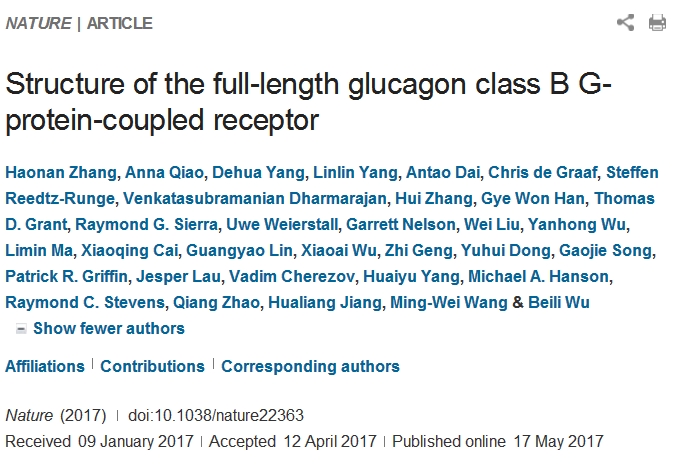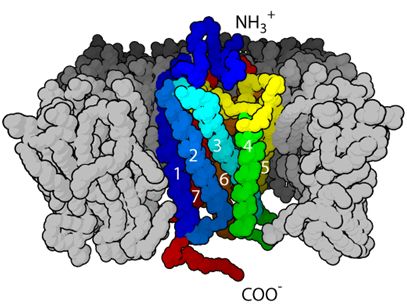Search Product
Structure Search
Search
Advantage Products
Location: Industrial Info
Breakthrough! Chinese scientists crack the structure of class B GPCR
2017-05-24
来源:转载自第三方
24 May 2017
Recently, the international team led by Chinese scientists break out the full-length structure of B-class G protein-coupled receptor, which will help develop a new type 2 diabetes drugs. Related research results have been published in the international journal "Nature", entitled "Structure of the full-length glucagon class B G-protein-coupled receptor".

Type 2 diabetes is a progressive disease, the body can not effectively use insulin. More than 450 million people worldwide are suffering from diabetes, and if they can not be effectively controlled, the disease can cause complications such as retinopathy, nephropathy, neuropathy and coronary arteries, cerebrovascular and peripheral vascular diseases. The current types of oral hypoglycemic agents are insulin secretion promoters such as sulfadiazine and repaglinide, insulin sensitizers such as biguanides (metformin) and glitazones, and glucosidase inhibitors such as Vildagliptin (intermediate 3-amino-1-adamantanol), etc., they can reduce the body glucose content.
In addition, the scientists also found that there is a protein on the surface of cell, G protein coupled receptor (GPCR), is the largest protein family in human’s body, there are 826 members, and play a very important role in a variety of life activities. The sense of smell, taste, and even love at first sight, are related to this type of protein. It has a very strange structure—such as the needle in the cell membrane back and forth across seven times.

Glucagon receptors belong to type B GPCR, and many members of class B GPCR are considered to be potential drug targets. When binding molecules or ligands arrive on the cell surface to bind to GPCR, GPCR will carry them important information to transmit to the cells, thereby affecting cell behavior and regulation, it can be used to treat metabolic diseases, cardiovascular disease, migraine and osteoporosis and other diseases. Because of the lack of structural information, there is no listed drugs.
The team led by Prof. Beili Wu of the Shanghai Institute of Drugs at the Chinese Academy of Sciences obtained a full-length structure of G protein-coupled receptor (GPCR). This is the first time that Chinese scientists obtain the full-length structure of Class B GPCR proteins with a resolution of up to 3.0Å (1Å=0.1nm). This information is critical to the development of effective drugs, and pharmaceutical companies hope to develop new drugs that will be able to more accurately and more efficiently bind to cell receptors, including diabetes drugs that will prevent or reduce the excessive production of glucose.
The fine structure is a lighthouse for the development of new drug research and development based on this target, it breaks the bottleneck in the pharmaceutical process. Based on the very detailed structure of this protein receptor, many large pharmaceutical companies will actively develop new diabetes drugs, and perhaps there will be good news soon.
Related Links: 3-Amino-1-adamantanol
Edited by the Editorial Office of Suzhou Yacoo Science Co., Ltd.
如果涉及转载授权,请联系我们。












